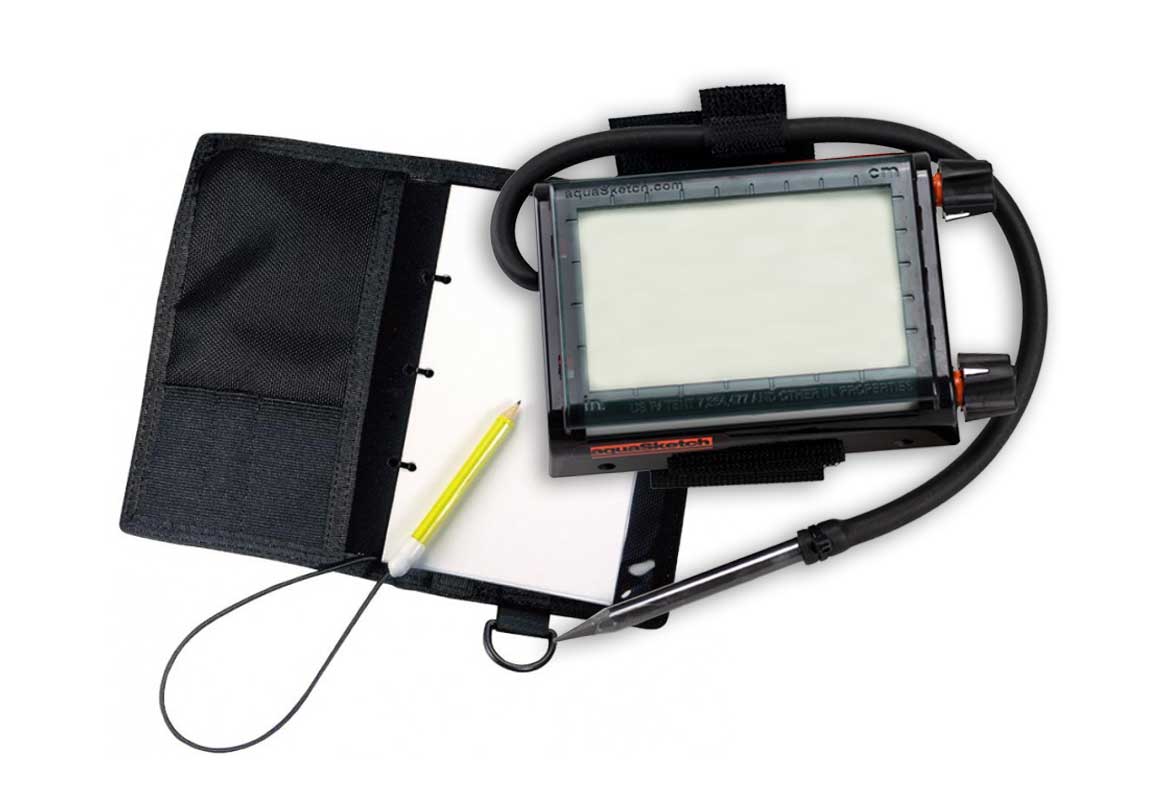Most divers benefit by having a means to keep notes during or between dives. Information about conditions, sightings, gear issues etc. are easy to forget before having access to a logbook.
If you are a technical diver, carrying a slate is general not considered optional. At the very least, this is where you keep your decompression tables along with backup decompressions tables. A slate is handy for recording information about the dive and keeping notes about navigation or critical dive data. It is also for communicating when hand signals just aren’t enough.
Most dive slates are made of hard plastic. You are likely familiar with curved, wrist-mount slates, as well as flat slates of various sizes. Both are simple and reliable, but suffer from having very limited writing space. Flat slates of any size are terribly inconvenient to carry, and the curved ones are difficult to write on.
Your decompression profile and backups take up considerable space by themselves, leaving little room for much else. Depending on the model, even storing the pencil can be a problem.
Finally, many divers complain that writing on plastic results in faint, difficult to read, notes. For critical information, that can be a very real safety concern.
Wet notes, or wetnotes, is essentially a booklet made up of waterproof pages. These provide space for recording tons of dive data, tables and so on. Cave divers and underwater archeologists use them all the time because flat slates simply don’t provide enough space for their needs.
The downside with these kinds of submersible notebooks is wet, thin pages tend to stick together. Underwater, they are almost impossible to separate while wearing gloves. With dry gloves, the problem is even worse.

AquaSketch is a forearm or wrist-mounted dive slate that uses a 10’ strip of waterproof paper-like material between two rollers. A knob at the end of each roller allows you to scroll forward or back to access previously written information, or to access blank writing space.
The knobs are large enough to easily operate with dry gloves, and even the pencil stows away neatly by simply sliding it into a slot on the right side. Simplicity is key. AquaSketch works well for technical diving because there’s nothing to stow, and nothing that’s overly fidgety or too large to manage easily.
Notes are dark and legible.
At 100 meters down, you need to be able to read your dive profile or backup tables. In dim light, faint writing disappears. The AquaSketch writing surface has exactly the right texture for creating deep, bold text. The result is higher contrast, which is easier to read in low light or poor visibility.